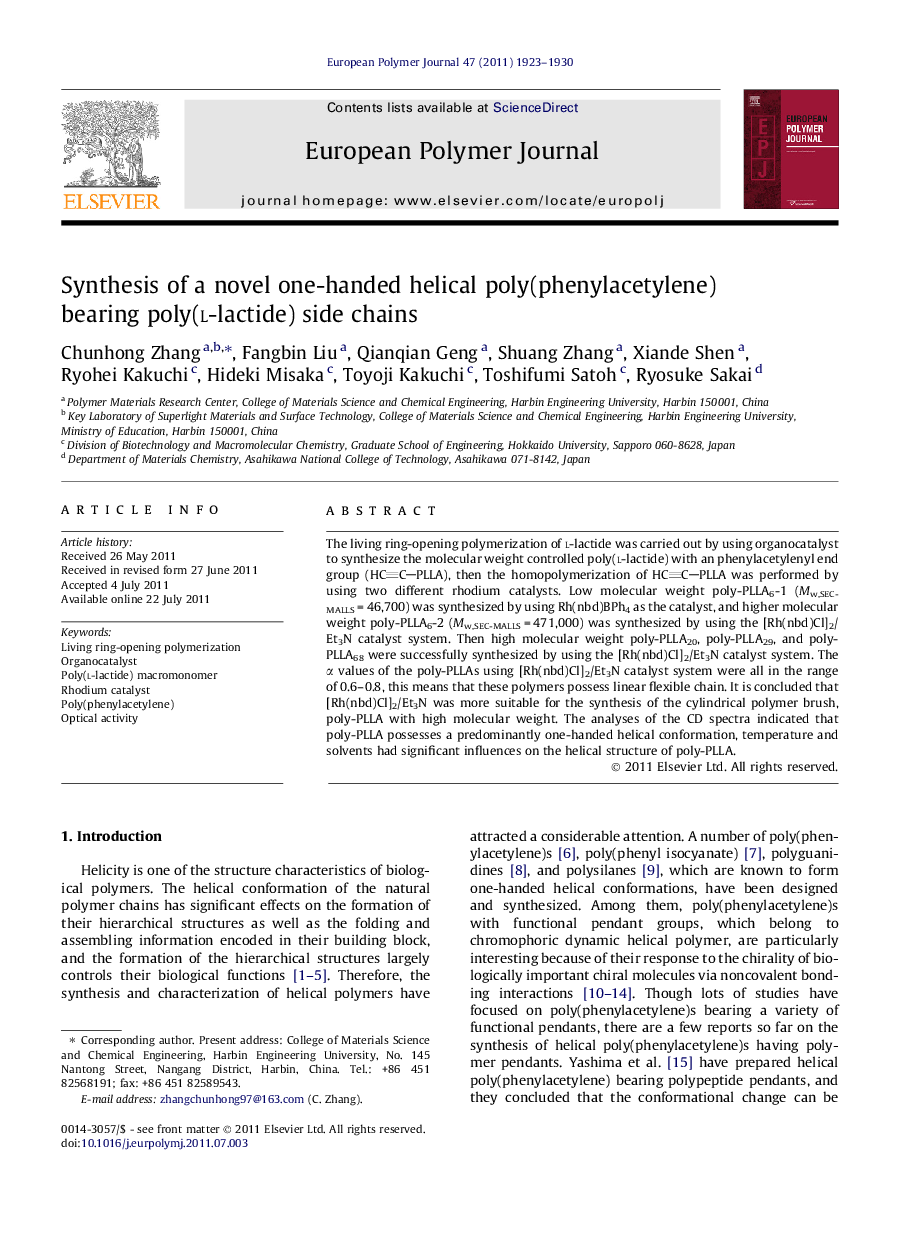| Article ID | Journal | Published Year | Pages | File Type |
|---|---|---|---|---|
| 1400666 | European Polymer Journal | 2011 | 8 Pages |
The living ring-opening polymerization of l-lactide was carried out by using organocatalyst to synthesize the molecular weight controlled poly(l-lactide) with an phenylacetylenyl end group (HCCPLLA), then the homopolymerization of HCCPLLA was performed by using two different rhodium catalysts. Low molecular weight poly-PLLA6-1 (Mw,SEC-MALLS = 46,700) was synthesized by using Rh(nbd)BPh4 as the catalyst, and higher molecular weight poly-PLLA6-2 (Mw,SEC-MALLS = 471,000) was synthesized by using the [Rh(nbd)Cl]2/Et3N catalyst system. Then high molecular weight poly-PLLA20, poly-PLLA29, and poly-PLLA68 were successfully synthesized by using the [Rh(nbd)Cl]2/Et3N catalyst system. The α values of the poly-PLLAs using [Rh(nbd)Cl]2/Et3N catalyst system were all in the range of 0.6–0.8, this means that these polymers possess linear flexible chain. It is concluded that [Rh(nbd)Cl]2/Et3N was more suitable for the synthesis of the cylindrical polymer brush, poly-PLLA with high molecular weight. The analyses of the CD spectra indicated that poly-PLLA possesses a predominantly one-handed helical conformation, temperature and solvents had significant influences on the helical structure of poly-PLLA.
Graphical abstractFigure optionsDownload full-size imageDownload as PowerPoint slideHighlights► Well-defined poly(l-lactide) with a phenylacetylenyl end group was synthesized. ► Poly(phenylacetylene) bearing poly(l-lactide) side chains was synthesized. ► The main chain of poly(phenylacetylene) possesses a helical conformation. ► The helical conformation decreased with the increasing temperature. ► The helical conformation varied in different solvents.
